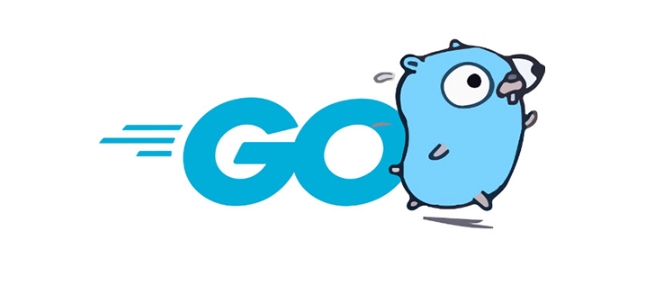In IoT systems, the key links in data aggregation and processing include data aggregation, edge computing and data cleaning. ① Data aggregation reduces redundant data through timed batch uploads, event triggering or statistical summary; ② Edge computing is initially processed near the device side to reduce delays and improve fault tolerance; ③ Data cleaning removes outliers, completes missing fields and unifies the format, laying the foundation for subsequent analysis. In addition, it is recommended to use message queues to buffer data, adopt a hierarchical processing structure, strengthen monitoring and pre-security mechanisms during deployment to build an efficient and stable data pipeline.

In the Internet of Things (IoT) system, data aggregation and processing are one of the most critical links in the entire chain. The data collected by the equipment is often scattered and trivial, and it is difficult to exert its true value without effective integration and preliminary processing.

Data aggregation: Starting from the source
There are huge numbers of devices in IoT systems, and thousands of pieces of data can be generated per second. If these data are directly transmitted to the backend without sorting, it will not only have high network pressure, but will also affect subsequent analysis efficiency.
The purpose of aggregation is to merge, compress or simplify data from multiple devices or multiple time points in the same device , thereby reducing transmission frequency and data redundancy. Common practices include:

- Timely batch upload
- Trigger aggregation by event (for example, upload only when an exception occurs)
- Statistical information such as average and maximum data over a period of time
For example, if a temperature and humidity monitoring system uploads data once every second, it actually doesn’t change much most of the time. We can set the summary every 5 minutes and only pass the average value and fluctuation range, which saves resources and does not affect the overall trend judgment.
Edge computing: Processing forward, reducing latency
Many IoT scenarios require high real-time performance, such as industrial control and security monitoring. At this time, we cannot rely on unified cloud processing, but we must do preliminary processing on the side close to the device, that is, the edge node.

The advantages of edge computing are:
- Reduce the time for data to and from cloud servers
- Reduce bandwidth usage
- Improve system fault tolerance (can also make local decisions when the network is disconnected)
In practical applications, lightweight processing logic can be deployed on gateways or embedded devices. For example, small services written in Go language realize data filtering, format conversion, exception detection and other functions.
If you use Go for edge processing, there are a few points to pay attention to:
- Use efficient concurrency model (goroutine channel)
- Try to avoid complex algorithms and keep them light
- Consider memory and CPU limitations and allocate resources reasonably
Data cleaning and preprocessing: laying the foundation for analysis
The aggregated data may not necessarily be used directly for analysis, but may contain noise, missing values or even incorrect formats. Therefore, some basic cleaning and pre-processing are required before entering the database or analytics system.
This part of the work usually includes:
- Remove obvious outliers (such as temperature sensor falsely predicts ultra-high temperature)
- Complete missing fields (can set default values or calculate based on context)
- Unified timestamps, units, encoding formats, etc.
Go's advantage in this area is its stable performance and good cross-platform support, and it is suitable for writing some resident services to continuously process incoming data flows. You can combine some libraries, such as time processing timestamps, encoding/json parsing JSON data, and coordinating logging and error retry mechanisms to build a stable preprocessing process.
Some tips for actual deployment
- Priority is given to message queues : such as Kafka or RabbitMQ, which is used to buffer large influx of data and prevent backend overload.
- Hierarchical processing structure : device-side aggregation → edge node processing → cloud-end in-depth analysis, this structure is more flexible and easier to expand.
- Monitoring cannot be ignored : even for edge nodes, basic indicators must be reported, such as processing delays, number of failures, etc.
- Security must be preceded : encryption, identity authentication and other mechanisms should be added in the data aggregation and processing stages to avoid tampering in the middle.
Basically that's it. IoT data processing seems simple, but there are many details and are prone to problems, especially when the device scales up. When using Go to do this, performance and stability are guaranteed. As long as it is designed properly, it can fully support an efficient data pipeline.
The above is the detailed content of Go for IoT Data Aggregation and Processing. For more information, please follow other related articles on the PHP Chinese website!

Hot AI Tools

Undress AI Tool
Undress images for free

Undresser.AI Undress
AI-powered app for creating realistic nude photos

AI Clothes Remover
Online AI tool for removing clothes from photos.

Clothoff.io
AI clothes remover

Video Face Swap
Swap faces in any video effortlessly with our completely free AI face swap tool!

Hot Article

Hot Tools

Notepad++7.3.1
Easy-to-use and free code editor

SublimeText3 Chinese version
Chinese version, very easy to use

Zend Studio 13.0.1
Powerful PHP integrated development environment

Dreamweaver CS6
Visual web development tools

SublimeText3 Mac version
God-level code editing software (SublimeText3)

Hot Topics
 Is golang frontend or backend
Jul 08, 2025 am 01:44 AM
Is golang frontend or backend
Jul 08, 2025 am 01:44 AM
Golang is mainly used for back-end development, but it can also play an indirect role in the front-end field. Its design goals focus on high-performance, concurrent processing and system-level programming, and are suitable for building back-end applications such as API servers, microservices, distributed systems, database operations and CLI tools. Although Golang is not the mainstream language for web front-end, it can be compiled into JavaScript through GopherJS, run on WebAssembly through TinyGo, or generate HTML pages with a template engine to participate in front-end development. However, modern front-end development still needs to rely on JavaScript/TypeScript and its ecosystem. Therefore, Golang is more suitable for the technology stack selection with high-performance backend as the core.
 How to build a GraphQL API in golang
Jul 08, 2025 am 01:03 AM
How to build a GraphQL API in golang
Jul 08, 2025 am 01:03 AM
To build a GraphQLAPI in Go, it is recommended to use the gqlgen library to improve development efficiency. 1. First select the appropriate library, such as gqlgen, which supports automatic code generation based on schema; 2. Then define GraphQLschema, describe the API structure and query portal, such as defining Post types and query methods; 3. Then initialize the project and generate basic code to implement business logic in resolver; 4. Finally, connect GraphQLhandler to HTTPserver and test the API through the built-in Playground. Notes include field naming specifications, error handling, performance optimization and security settings to ensure project maintenance
 How to install Go
Jul 09, 2025 am 02:37 AM
How to install Go
Jul 09, 2025 am 02:37 AM
The key to installing Go is to select the correct version, configure environment variables, and verify the installation. 1. Go to the official website to download the installation package of the corresponding system. Windows uses .msi files, macOS uses .pkg files, Linux uses .tar.gz files and unzip them to /usr/local directory; 2. Configure environment variables, edit ~/.bashrc or ~/.zshrc in Linux/macOS to add PATH and GOPATH, and Windows set PATH to Go in the system properties; 3. Use the government command to verify the installation, and run the test program hello.go to confirm that the compilation and execution are normal. PATH settings and loops throughout the process
 Go sync.WaitGroup example
Jul 09, 2025 am 01:48 AM
Go sync.WaitGroup example
Jul 09, 2025 am 01:48 AM
sync.WaitGroup is used to wait for a group of goroutines to complete the task. Its core is to work together through three methods: Add, Done, and Wait. 1.Add(n) Set the number of goroutines to wait; 2.Done() is called at the end of each goroutine, and the count is reduced by one; 3.Wait() blocks the main coroutine until all tasks are completed. When using it, please note: Add should be called outside the goroutine, avoid duplicate Wait, and be sure to ensure that Don is called. It is recommended to use it with defer. It is common in concurrent crawling of web pages, batch data processing and other scenarios, and can effectively control the concurrency process.
 Go embed package tutorial
Jul 09, 2025 am 02:46 AM
Go embed package tutorial
Jul 09, 2025 am 02:46 AM
Using Go's embed package can easily embed static resources into binary, suitable for web services to package HTML, CSS, pictures and other files. 1. Declare the embedded resource to add //go:embed comment before the variable, such as embedding a single file hello.txt; 2. It can be embedded in the entire directory such as static/*, and realize multi-file packaging through embed.FS; 3. It is recommended to switch the disk loading mode through buildtag or environment variables to improve efficiency; 4. Pay attention to path accuracy, file size limitations and read-only characteristics of embedded resources. Rational use of embed can simplify deployment and optimize project structure.
 Go for Audio/Video Processing
Jul 20, 2025 am 04:14 AM
Go for Audio/Video Processing
Jul 20, 2025 am 04:14 AM
The core of audio and video processing lies in understanding the basic process and optimization methods. 1. The basic process includes acquisition, encoding, transmission, decoding and playback, and each link has technical difficulties; 2. Common problems such as audio and video aberration, lag delay, sound noise, blurred picture, etc. can be solved through synchronous adjustment, coding optimization, noise reduction module, parameter adjustment, etc.; 3. It is recommended to use FFmpeg, OpenCV, WebRTC, GStreamer and other tools to achieve functions; 4. In terms of performance management, we should pay attention to hardware acceleration, reasonable setting of resolution frame rates, control concurrency and memory leakage problems. Mastering these key points will help improve development efficiency and user experience.
 How to build a web server in Go
Jul 15, 2025 am 03:05 AM
How to build a web server in Go
Jul 15, 2025 am 03:05 AM
It is not difficult to build a web server written in Go. The core lies in using the net/http package to implement basic services. 1. Use net/http to start the simplest server: register processing functions and listen to ports through a few lines of code; 2. Routing management: Use ServeMux to organize multiple interface paths for easy structured management; 3. Common practices: group routing by functional modules, and use third-party libraries to support complex matching; 4. Static file service: provide HTML, CSS and JS files through http.FileServer; 5. Performance and security: enable HTTPS, limit the size of the request body, and set timeout to improve security and performance. After mastering these key points, it will be easier to expand functionality.
 Go select with default case
Jul 14, 2025 am 02:54 AM
Go select with default case
Jul 14, 2025 am 02:54 AM
The purpose of select plus default is to allow select to perform default behavior when no other branches are ready to avoid program blocking. 1. When receiving data from the channel without blocking, if the channel is empty, it will directly enter the default branch; 2. In combination with time. After or ticker, try to send data regularly. If the channel is full, it will not block and skip; 3. Prevent deadlocks, avoid program stuck when uncertain whether the channel is closed; when using it, please note that the default branch will be executed immediately and cannot be abused, and default and case are mutually exclusive and will not be executed at the same time.






